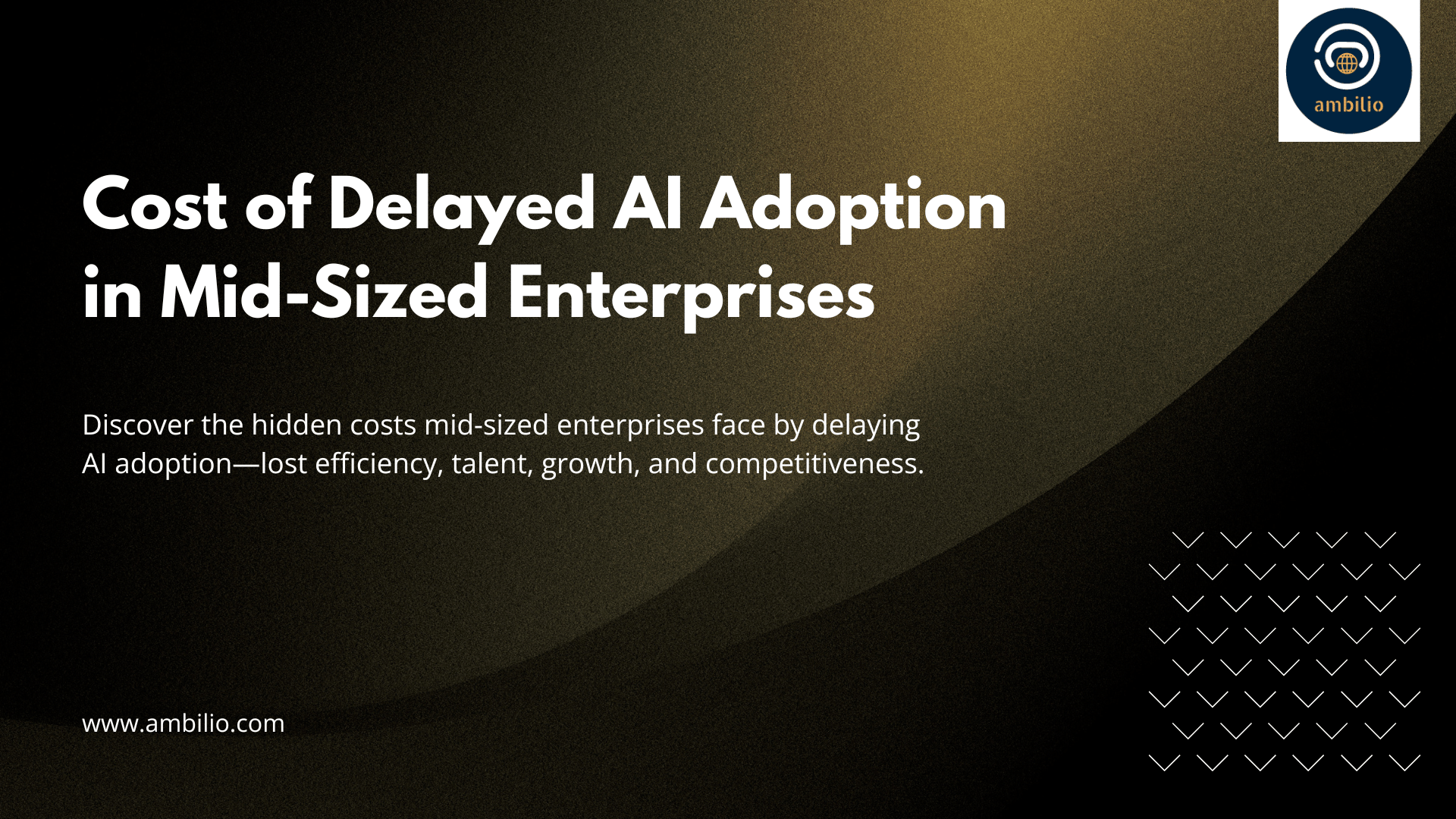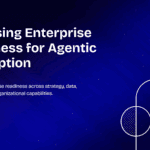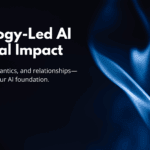In the current business environment, where competition is intensifying and efficiency is non-negotiable, Artificial Intelligence (AI) is no longer a speculative investment—it is a necessary tool for sustaining growth and innovation. Yet, a large number of mid-sized enterprises (MSEs) continue to postpone their AI journey, often citing lack of readiness, limited resources, or operational complexity. While this hesitation may seem cautious, it comes with significant and often overlooked costs. This article explores the common myths that lead to delayed AI adoption, the hidden losses incurred during inaction, the unique vulnerability of mid-sized firms, examples of early adopters, and a realistic path forward for those ready to move from delay to deliberate action.
The Illusion of Readiness
One of the most persistent beliefs among mid-sized business leaders is that AI adoption must wait until the organization is fully “ready”—with abundant data, advanced digital infrastructure, or dedicated data science teams in place. This idea, though understandable, is largely misplaced.
AI capability is not something a company acquires passively while waiting for ideal conditions. It is something built progressively through targeted interventions, incremental pilots, and sustained organizational learning. The more a firm delays, the more it risks falling behind. Competitors that take even modest steps forward begin developing AI maturity that compounds over time—improving their operations, building internal expertise, and creating data feedback loops that further sharpen their systems.
This readiness fallacy delays not just the use of AI, but the very learning required to adopt it effectively.
The Hidden Costs of Delaying AI in Mid-Sized Enterprises
While the cost of AI implementation is often debated, the cost of not implementing it is rarely measured—despite being substantial and persistent. These hidden costs affect nearly every part of the business.
Operational inefficiencies are among the most obvious. Without AI, repetitive tasks continue to be handled manually—whether in finance, logistics, HR, or customer service. This not only consumes time and resources but also leads to slower decision-making, higher error rates, and reduced agility.
Opportunity loss is another silent killer. AI can drive personalization in marketing, optimize pricing strategies, enable predictive maintenance, and enhance customer support. When such capabilities are absent, companies forfeit real growth potential—missing out on both revenue gains and cost savings.
Talent challenges also emerge over time. Younger, digital-savvy employees increasingly prefer workplaces that offer automation, intelligent systems, and innovation-driven cultures. Companies that lag in technology adoption may struggle to retain or attract such talent, leading to a gradual weakening of their workforce quality.
Finally, vendor dependence becomes a long-term liability. In the absence of internal AI capabilities, firms often rely heavily on third-party tools that are either too generic or difficult to integrate. This limits customization, creates system silos, and can lock companies into rigid workflows that don’t evolve with their needs.
Why Mid-Sized Firms Are Particularly Vulnerable
Mid-sized enterprises occupy a difficult middle ground. They are typically too complex to be served entirely by plug-and-play automation tools but lack the scale and resources of large enterprises to build dedicated AI teams or innovation labs.
This structural position makes them uniquely vulnerable. Their agility—a competitive strength in many cases—can become a weakness when decision-making becomes reactive instead of strategic. They are more exposed to economic shifts, more reliant on operational efficiency, and less resilient to delays in transformation.
Moreover, many mid-sized firms operate in sectors such as manufacturing, retail, logistics, and financial services—industries that are rapidly being reshaped by AI. In these contexts, delayed adoption doesn’t just slow progress; it creates existential risk.
Learning from the Early Movers
Some mid-sized enterprises have already made deliberate strides into AI adoption—and their results demonstrate the value of acting early. These companies did not wait for the perfect moment. Instead, they selected targeted use cases, launched small pilots, and scaled based on results.
For example, a mid-sized insurer implemented an AI-based claims triaging system that significantly reduced processing times and improved fraud detection. A regional manufacturing firm deployed predictive maintenance tools on its production line, cutting unplanned downtime and increasing throughput. Others have implemented chatbot-led customer service, dynamic pricing, or automated onboarding systems with measurable ROI.
These early adopters have seen improvements in unit economics, stronger internal data capabilities, faster turnaround times, and in some cases, improved enterprise valuations—especially among those seeking investment or acquisition.
The Risk of Strategic Blindness
Perhaps the most critical consequence of delaying AI is the growing gap in strategic awareness. Companies without AI struggle to detect early signals in customer behavior, supply chain dynamics, and financial forecasting. They often react to problems instead of anticipating them.
This absence of real-time insight creates a decision-making lag that becomes more damaging as markets evolve faster. In contrast, AI-enabled firms benefit from the ability to simulate scenarios, model outcomes, and respond intelligently to changing conditions. Over time, this strategic agility becomes a defining competitive advantage.
A Practical Approach to AI Adoption
Adopting AI does not require a large transformation initiative or a complete organizational overhaul. For most mid-sized firms, the path forward begins with a few targeted, high-impact initiatives.
Common starting points include:
- Automating document summarization for compliance and legal departments
- Deploying internal chatbots to streamline HR or IT support
- Introducing AI-based triaging for claims, tickets, or invoices
- Enhancing lead scoring or customer segmentation in marketing
The key is to align these interventions with business priorities, define clear metrics for success, and use them as learning platforms to build internal comfort and capability.
Firms like Ambilio specialize in helping mid-sized companies take these first steps. Through strategic guidance, use-case identification, and hands-on support for pilot design and execution, Ambilio helps businesses not only adopt AI but do so in a way that builds confidence, capacity, and long-term value.
Where Value Is Lost: Common Impact Zones
Although AI can be applied across many business functions, there are certain areas where the value loss from inaction is most pronounced:
- Customer service: Slower response times and inconsistent resolution quality
- Finance and compliance: Higher effort in manual reporting and reconciliation
- Marketing and sales: Ineffective targeting, generic messaging, and higher customer acquisition costs
- Supply chain and operations: Inventory imbalances, shipment delays, and suboptimal resource utilization
- Talent management: Friction in hiring, training, and internal communication
Addressing these areas can yield significant improvements, often with minimal disruption.
Final Words
For mid-sized enterprises, delaying AI adoption is not a neutral act—it is a strategic risk with compounding consequences. The loss may not always be immediately visible, but it shows up in missed opportunities, operational inefficiencies, disengaged employees, and slower decision cycles.
The good news is that the journey need not be complex or expensive. With the right focus, mid-sized firms can begin small, learn fast, and scale smart. The time to move is now—not because AI is trendy, but because it has become essential.
Postponing action may feel safe, but in today’s competitive environment, hesitation is often the most expensive choice of all.



